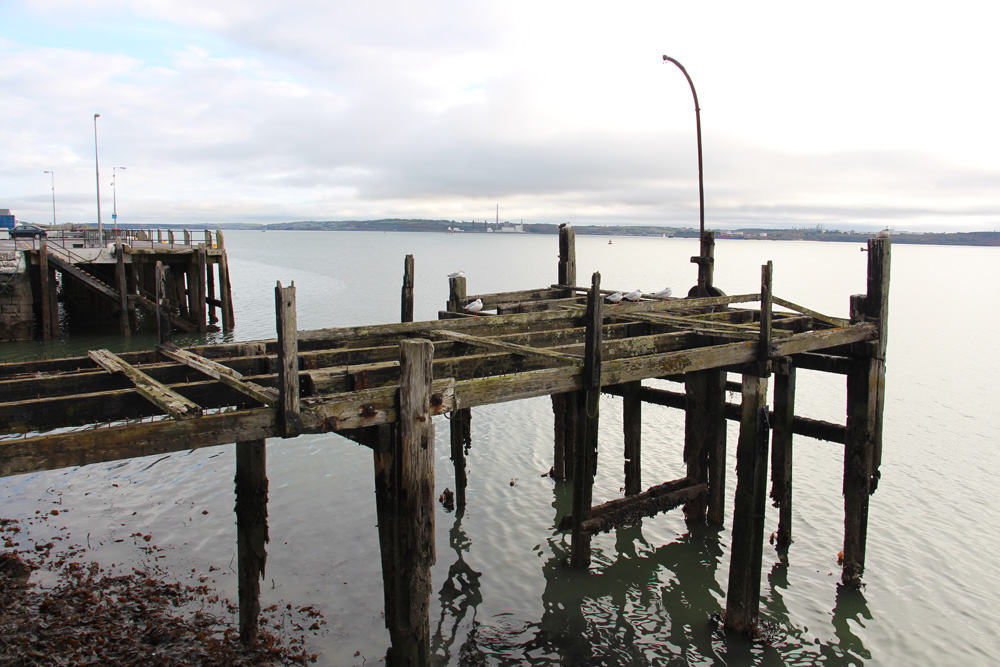Turns out, there may be something to Ireland’s legendary pot of gold at the end of the rainbow – minus the leprechauns. "Two workmen were digging out around an old foundation in Tipperary and started coming across coins in the ground they were shoveling," says local archeologist, Seán Shanahan. "The more they shoveled the more the coins kept coming out." A hoard of 81 gold coins in fact, dating from the 17th century and probably worth around 20,000 euro these days.
"So, the guys are thinking 'Bingo, we’ve won the lottery here' before getting the bad news that the gold coins were indeed the property of the Irish State," says Shanahan, explaining his country’s Heritage Laws when it comes to unearthing artifacts, and putting an end to my fortune-hunting dreams in Ireland too. "It’s not for the glory of the treasure, I can assure you," laughs the archeologist when I compare him to an Irish Indiana Jones. "Jewel-crusted artifacts are things that you rarely, rarely come across. "For me, there’s something very alluring and interesting about this type of work. You’re uncovering items from the ground that haven’t been touched by another person in hundreds and thousands of years. Ireland is very fortunate to have all of this history that people can connect with. Tourists come here for that connection with the place, to connect with their past and to get a good story. And there’s no better person than an Irishman or woman to tell a good yarn."
Vikings Legends
For another good yarn or two from Ireland’s Ancient East, Waterford tour guide, Jack Burtchaell’s your man. "It’s a bit like a television soap opera with folks fighting over Waterford for centuries," says Jack, sharing the legendary tales of Ireland’s oldest city, founded by the Vikings way back in 914 A.D. Waterford’s walkable Viking Triangle comes to life with this "gift of the gab" guide, who somehow squeezes more than a thousand years of history into one entertaining hour.
"After 3 days of vicious fighting - and quite a bit of bad language - Strongbow’s army smashed through the walls, right here where we’re standing, captured the city and changed the whole course of Irish history," says Jack, taking us back to 1170 when Anglo-Normans captured Waterford from the Vikings. "Henry VIII was really a 21st century reality TV star. He was just born 550 years too soon. If Henry were around today, he’d be shacked up with the Kardashians. Henry wanted a divorce, the Pope refused and Henry flipped. He broke the church and the English reformation began," pointing out the Dominican Priory - a massive abbey dissolved in 1540 and turned into a courthouse. Jack shares Waterford’s Canadian connection, stopping by the statue of Ireland’s great patriot, Thomas Francis Meagher. "Thomas’s grandfather had emigrated to Newfoundland in the 1780s, shipping cod and other products back to Waterford. Thomas’s father continued the family business in Waterford, and made an absolute fortune in trading with Newfoundland." A round blue plaque reads, "Waterford – Newfoundland 1670-1810 Thousands of migrants sailed annually from here to work on the Grand Banks cod fishery off Newfoundland." "Just picture it," says Jack. “Eight thousand young men with nine months’ pay and a nine-month thirst came home each Christmas; they hit Waterford like a hurricane. “Between 1800 and 1830, over 35,000 people from around Waterford City settled in Newfoundland. By the early 1840s, about half of the colony’s population were Irish settlers."

Irish Ancestors
It’s said that one out of every five Canadians have Irish heritage. I’m certainly one of them and you’ve probably heard of my famous Irish ancestor, Nellie McClung. In fact, a statue of cousin Nellie and the Famous Five suffragettes are on page 30 of my Canadian Passport. I grew up on my grandmother’s colourful stories of our famous, feisty, feminist relative, who helped bring in the women’s right to vote in Canada. "I met Nellie the year that your dad was born, in 1928," my Grandma (born Gladys McClung) told me years ago, pouring over pictures of our Irish ancestors. Nellie was the youngest daughter of John Mooney, a young Irish immigrant who came to Upper Canada from County Tipperary in 1830. "My father was then a lad of eighteen, who had never done anything but go to school. But the famines in Ireland were driving the young men to seek their fortunes elsewhere; and already some of his kinsmen had made the venture of coming to the New World," wrote Nellie of her fun-loving father, "who often laughed till the tears ran down his face."

Seafaring Stories
While Irish ancestors like mine left from every part of Ireland, the majority sailed from Ireland’s south coast port of Cobh. From 1848 to 1950, over six million adults and children emigrated from Ireland – more than 2.5 million of those departed from Cobh (then called Queenstown and now pronounced "Cove"), making this pretty seaside town the single most important port of Irish emigration.

And the last port of call for the doomed Titanic. "Locals call it ‘Heartbreak Pier'," says Titanic Trail tour guide Aideen Whitston of the now derelict pier. "On that morning of April 11, 1912, 123 passengers boarded two tenders from here out to the ill-fated Titanic." And it was from ‘Heartbreak Pier’ that many of our Irish ancestors got their last glimpse of home, sailing away from the Great Famine to their new life overseas in the New World.
By Janie Robinson


Our guest authors bring their unique perspectives and expertise, offering practical insights and no-nonsense takes on travel to destinations around the world, from Top 10 lists to the tips for travelling like a local. Whether you're looking for information, advice, or just a straightforward read, our guest contributors share their knowledge on a variety of topics.
Get Inspired
Travel Stories to Inspire You.
Newsletter
Unlock Even More
Sign up to our newsletter to unlock travel Specials, Inspiration, and Expert Guides right to your inbox.




